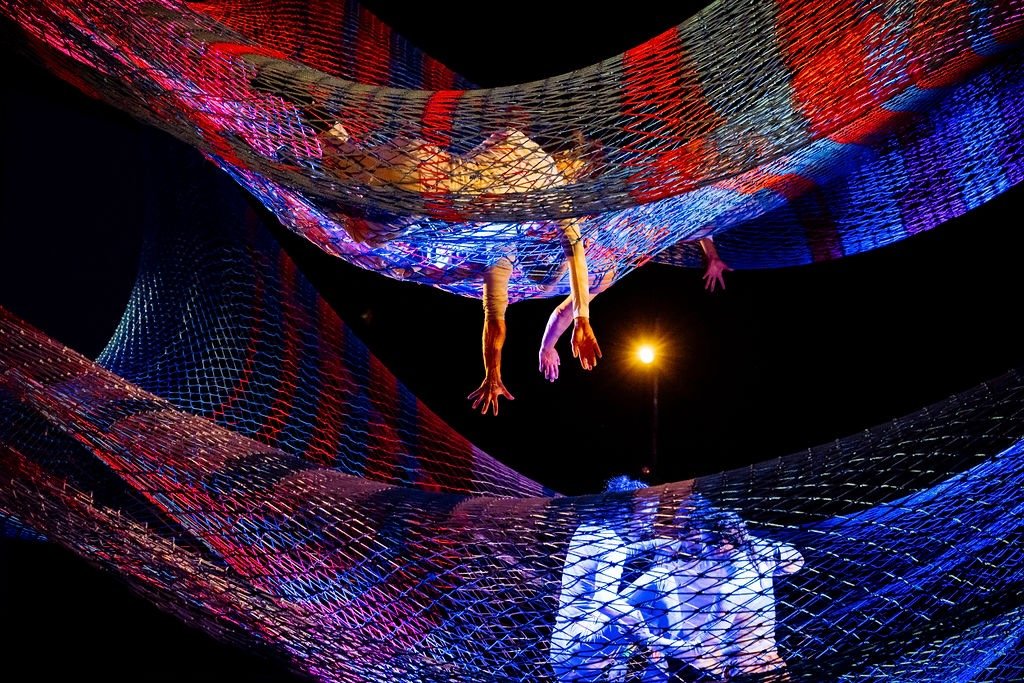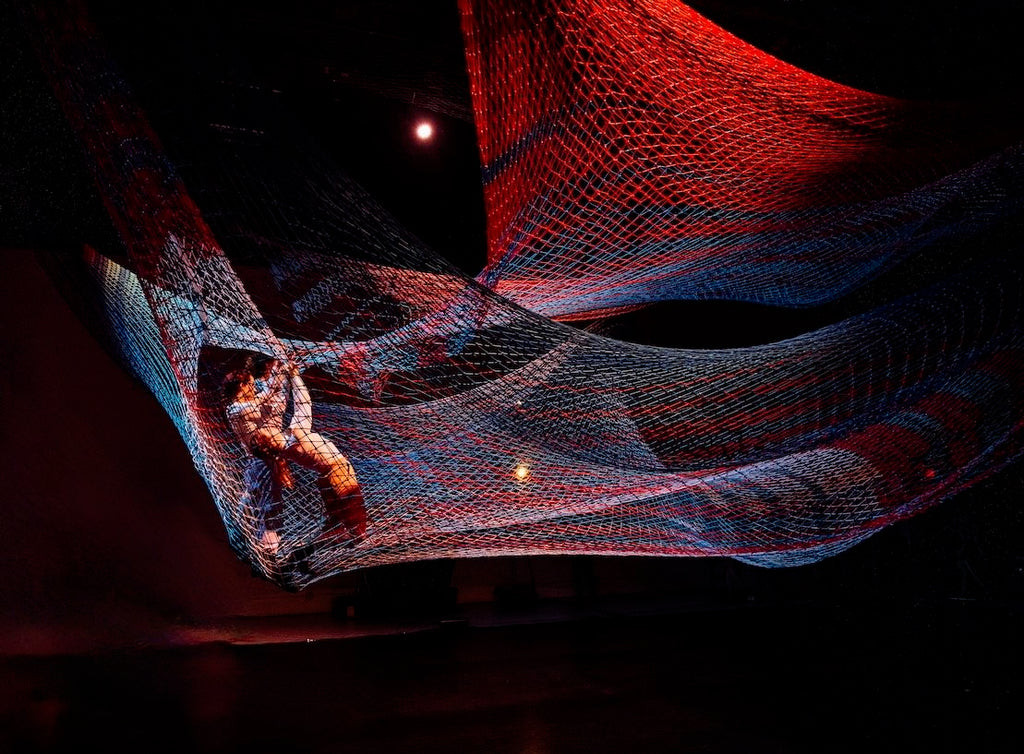Serata Forsythe
This program of three works by William Forsythe set to the music of James Blake has special meaning for La Scala Ballet.
Continua a leggere
World-class review of ballet and dance.
On one of the longest days of sunlight, the innovative, multi-disciplinary performance outpost in New York’s Hudson Valley, PS21, is presenting a “sneak preview” of a work under development in an onsite, four-week residency. The venue, with its 100 acres of unspoiled landscape, is dedicated to hosting residencies for the incubation of adventurous and oftentimes unclassifiable work. Surrounded by green slopes and leaf-laden trees, the open-air Pavilion Theater has been transformed with a black Marley floor in place of the usual seating area. Occupying the vertical space overhead, are two giant net sculptures by Janet Echelman. Suspended one above the other, they stretch across almost the entire length of the performance area. The audience is seated around this great centerpiece for a special preview of Rebecca Lazier’s “Noli Timere,” which means in Latin “Be Not Afraid.”
In an interview during the last week of the residency, I spoke with Lazier about the development of the production and the social practice it inspires. This conversation has been condensed and edited for clarity.



“Uncommonly intelligent, substantial coverage.”
Your weekly source for world-class dance reviews, interviews, articles, and more.
Already a paid subscriber? Login

This program of three works by William Forsythe set to the music of James Blake has special meaning for La Scala Ballet.
Continua a leggereUshering in the ninth season of Dance at the Odyssey, which takes place January 8–February 16 at the Odyssey Theatre Ensemble and features a number of cutting-edge choreographers and world premieres, curator, producer and festival co-founder Barbara Müller-Wittmann adores her job.
Continua a leggereAround this time of year, we can all use a little cheer. The early darkness, the cold, the state of the world alone can send one into a spiral.
Continua a leggereWill Tuckett’s new production of the “The Nutcracker” for the National Ballet of Japan serves up a holiday feast for the senses. Sweetly invigorating, it’s also a warm toddy for the soul. From start to finish, Tuckett’s “The Nutcracker” is truly a dream.
Continua a leggere
comments